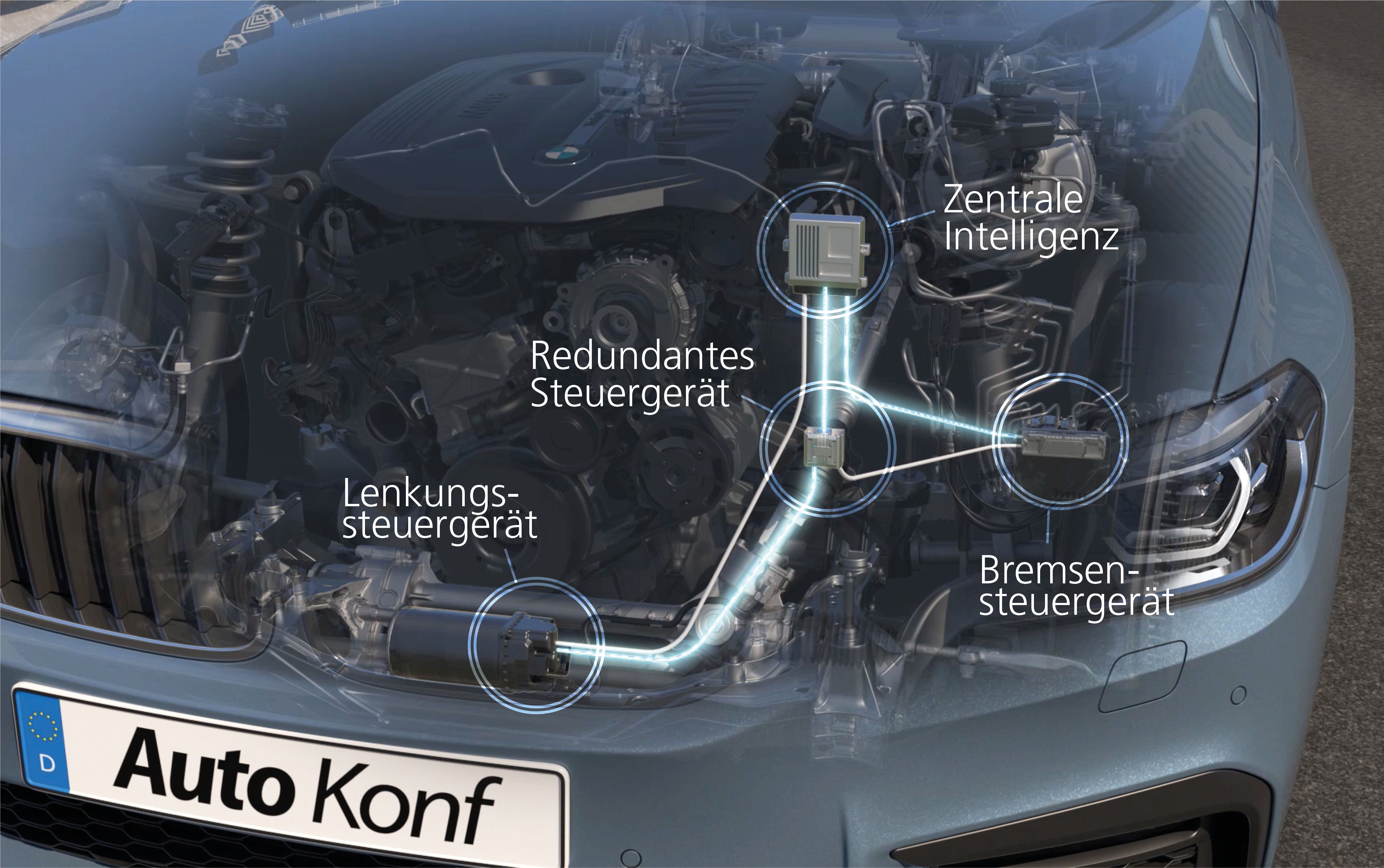Press briefing
Failsafe steering and braking for self-driving cars
AutoKonf, a project funded by Germany’s Federal Ministry of Education and Research, unveils innovative E/E architecture for highly automated vehicles.
The AutoKonf consortium recently presented a new solution designed to integrate safety-critical functions into highly automated vehicles’ E/E architecture with unprecedented economy and technical efficiency. The objective of this publicly funded project was to enable fault-tolerant braking and steering without having to install a full array of redundant components. This can now be done with a reconfigurable network of control units that cuts costs and reduces the component footprint.
Streamlined E/E architecture with fewer components
The transition from failsafe to fault-tolerant components in highly automated vehicles requires changes throughout the E/E architecture. Drivers may not always be able to respond immediately to take control in the event of a fault, so the components needed to operate autonomy-level-4 vehicles have to be failsafe. Conventional approaches simply duplicate braking and steering control units. If one component fails – say, the steering control unit – the backup takes over to make sure the car still steers properly. Redundant arrays are not always the best option, technically and economically speaking. With this drawback in mind, the AutoKonf partners joined forces to develop an innovative architecture that works with just one redundant control unit for all functions rather than redundant pairs. If the primary control unit for steering or braking fails, the network is reconfigured and the redundant unit immediately takes over whichever function has failed.
The AutoKonf project
The parties to the AutoKonf project set out to develop automatically reconfigurable actuator controls for failsafe automated driving functions. Five German companies collaborated in this effort. The system owes its reliable connectivity to the development efforts of the BMW Group’s Research, New Technologies, Innovations unit. The Fraunhofer EMFT research institution developed the switching unit and HELLA GmbH & Co. KGaA the chassis control unit. Intedis GmbH & Co. KG drafted the component specifications, handled the prototyping, validated the system and managed the project. ITK Engineering GmbH worked out the system’s requirements, architecture and safety concept.
Funded by the German Federal Ministry of Education and Research, the project ran from Oct. 1, 2016 to Sep. 30, 2019.
Last modified:
